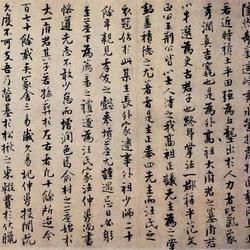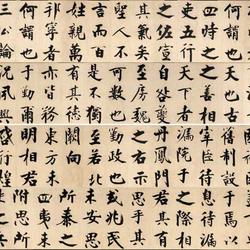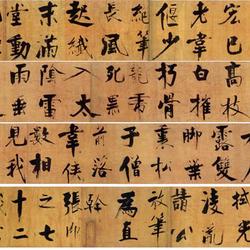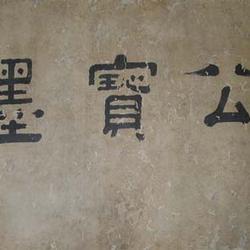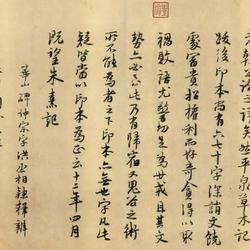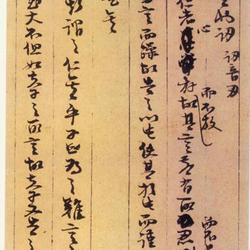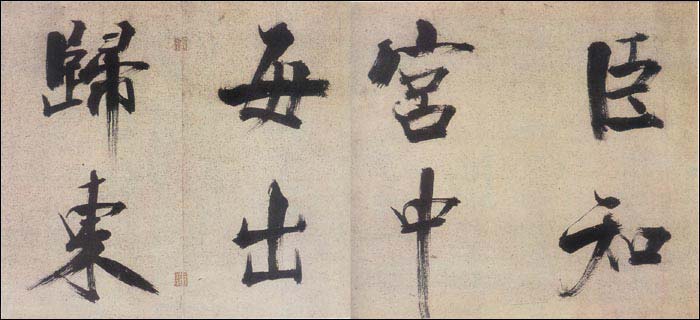
"Shu Du Poetry Volume" is Zhang Jizhi's large regular script, ink on paper, 34.6 cm in length and 128.7 cm in width, a total of 128 characters. He wrote two poems, Du Fu's Qilu, "Zi Chen Palace's Slogan to Retreat from the Dynasty" and "Giving the Envoys to Live in the Fields and Sheren Cheng". The book is full of ink, written calmly, with a sharp turn and sometimes white spots, creating a decisive and unique style. The donation is signed as "I went to Huanchuo Liao in August of the tenth year of Chunyou (1250)". He was 64 years old at that time.
It has been recognized in the calligraphy circles of past dynasties that "big characters are difficult to write wonderfully", "has been difficult since ancient times" and "has few effects". Why is this? Because of the layout and structure of large characters, few people can achieve the expected ideal state. However, Zhang Jizhi worked in regular script, and was especially good at list writing and large calligraphy. He was cherished by the world, and was purchased at a high price by the Jin Dynasty. Monuments and monuments were scattered across the river. It can be seen that Zhang Jizhi's calligraphy is extraordinary.
Zhang Ningyun of the Ming Dynasty said: "Wenfu is very good at large calligraphy. The characters on the plaque are like small regular scripts. He does not bother to arrange them, but they are clear and powerful." The reason why his calligraphy has achieved such high achievements and reached an extraordinary artistic level is that he never ceases to approach the pond. , practiced hard and worked hard all his life, and acquired extremely profound skills. Zhang Jizhi's books were definitely influenced by the Tang Dynasty, but he did not imitate the ancients or follow the footsteps of his predecessors. Instead, he was good at changing his approach and combined his personal strengths to create his own unique style. For example, in the powerful and upright "Shu Du Poetry Volume", he changed Yan Lugong's round-headed, straight-in, pure center-stroke brushing method, and occasionally adopted a side-stroke brushing method to alternately weave thick and dense lines, striving for stippling and structural perfection. The dangerous energy is pure and clear. This rolled-up pen writes down the ink calmly and calmly, running steadily, and the old pen is vertical and horizontal; the strokes are ups and downs, the turning is quite urgent, and the power penetrates the back of the paper. The Feibai method is used just right, thus adding a vigorous and heroic charm to the work. Its structure is neither carved nor polished, decisive, natural and hearty, elegant and powerful. The writing style in this volume is elegant and majestic, but the source of the writing can be found without breaking the rules. This is a very rare masterpiece of calligraphy and calligraphy, and it can be called a representative masterpiece of Zhang's large-character regular script.
"Du Shijuan" passed through the Southern Song, Yuan, and Ming dynasties without leaving any inscriptions or seals from connoisseurs. However, in the early Qing Dynasty, Wang Shu stamped many seals at the seam of the saddle and then entered the collection of Qianlong's inner palace. Recorded in "Shiqu Baoji·First Edition". Now in the Liaoning Provincial Museum.

